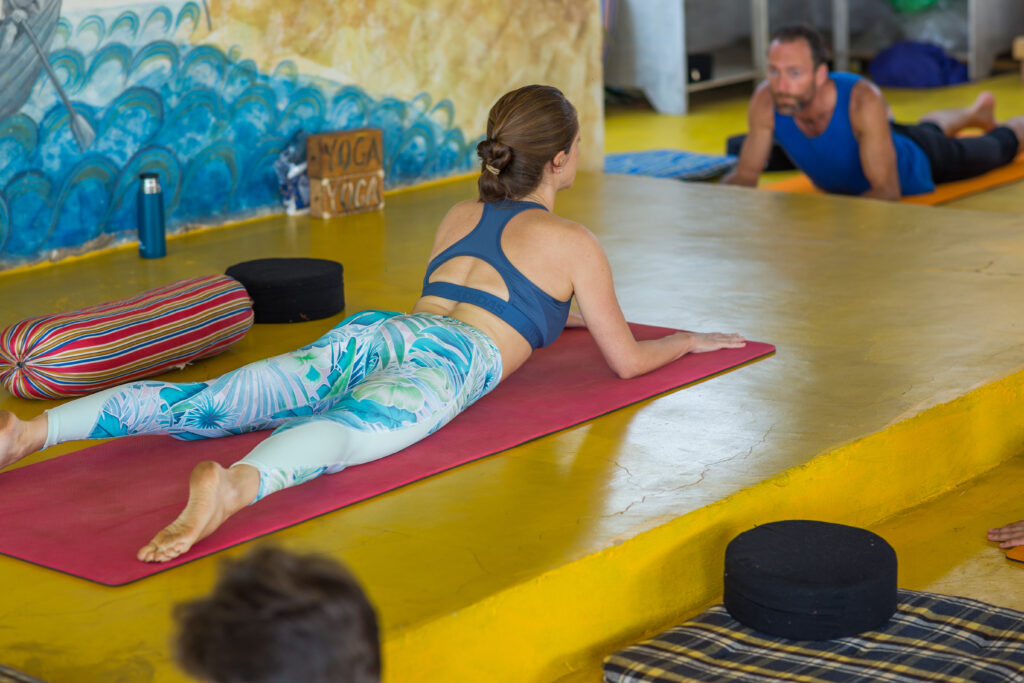200 Hours Yoga Teacher Training
Welcome to our 200-Hour Yoga Teacher Training Program!
Our 200-Hour Yoga Teacher Training is a comprehensive and transformative journey that will deepen your understanding of yoga, enhance your personal practice, and equip you with the skills and knowledge to become a confident and compassionate yoga teacher. Whether you are looking to embark on a teaching career or deepen your personal practice, this program will empower you to share the wisdom and benefits of yoga with others. Here’s what you can expect from our 200-Hour Yoga Teacher Training:
Comprehensive Curriculum:
Our curriculum covers all essential aspects of yoga, including asanas (postures), pranayama (breathwork), meditation, philosophy, anatomy, and teaching methodology. Through a combination of lectures, workshops, practical sessions, and self-reflection, you will gain a holistic understanding of yoga as a transformative practice for the body, mind, and spirit.
Experienced and Knowledgeable Faculty:
Our faculty consists of experienced yoga teachers who are passionate about sharing their knowledge and guiding you on your yoga journey. They bring a wealth of experience and expertise from diverse yoga traditions and lineages. With their guidance, you will receive personalized attention and support, ensuring that you develop a strong foundation in yoga and teaching skills.
Practical Teaching Experience:
Throughout the training, you will have ample opportunities to practice teaching. From small group sessions to full-class instruction, you will gradually build confidence and refine your teaching skills. Our faculty will provide constructive feedback and guidance to help you develop your unique teaching style, cultivate effective communication skills, and create a safe and inclusive class environment.
Anatomy and Physiology:
Understanding the human body is essential for teaching yoga safely and effectively. Our program includes a comprehensive study of anatomy and physiology, focusing on the musculoskeletal system, the respiratory system, and the subtle energetic systems of the body. You will learn how to adapt yoga practices to individual needs and prevent common injuries, ensuring that your teaching is grounded in anatomical knowledge.
Yoga Philosophy and Lifestyle:
Yoga is more than just physical postures; it is a way of life. Our training program explores the philosophical foundations of yoga, including the Yoga Sutras of Patanjali, the Bhagavad Gita, and other key texts. You will delve into the principles of yogic ethics, mindfulness, and self-inquiry, developing a deeper understanding of yoga as a holistic path towards self-realization and personal growth.
Self-Transformation and Personal Growth:
Our 200-Hour Yoga Teacher Training is not just about acquiring teaching skills; it is a transformative journey of self-discovery and personal growth. As you immerse yourself in the practice of yoga, you will develop greater self-awareness, resilience, and inner balance. This training will empower you to overcome personal limitations, cultivate self-compassion, and tap into your authentic voice as a teacher and a human being.
Yoga Alliance Certification:
Upon successful completion of the program, you will receive a Yoga Alliance certification, which is internationally recognized and allows you to teach yoga worldwide. This certification not only demonstrates your commitment to excellence but also opens up opportunities for professional growth and teaching opportunities in various yoga studios, wellness centers, and retreats.
Our 200-Hour Yoga Teacher Training is a transformative and life-enriching experience that will empower you to become a confident and knowledgeable yoga teacher. Whether you aspire to teach or simply deepen your practice, this program will provide you with the tools, insights, and support to embark on a fulfilling and meaningful yoga journey. Join us and let the transformative power of yoga awaken your true potential.






